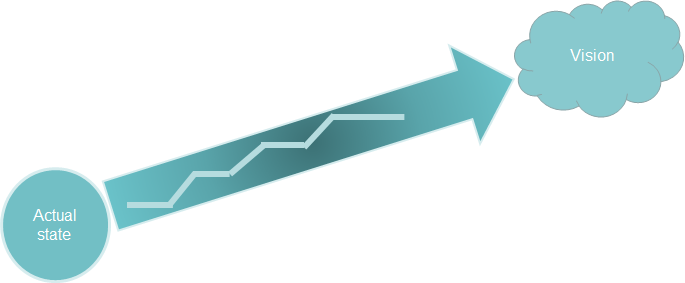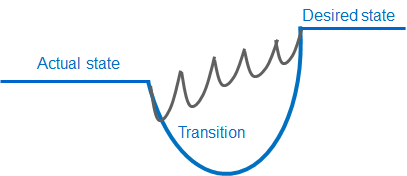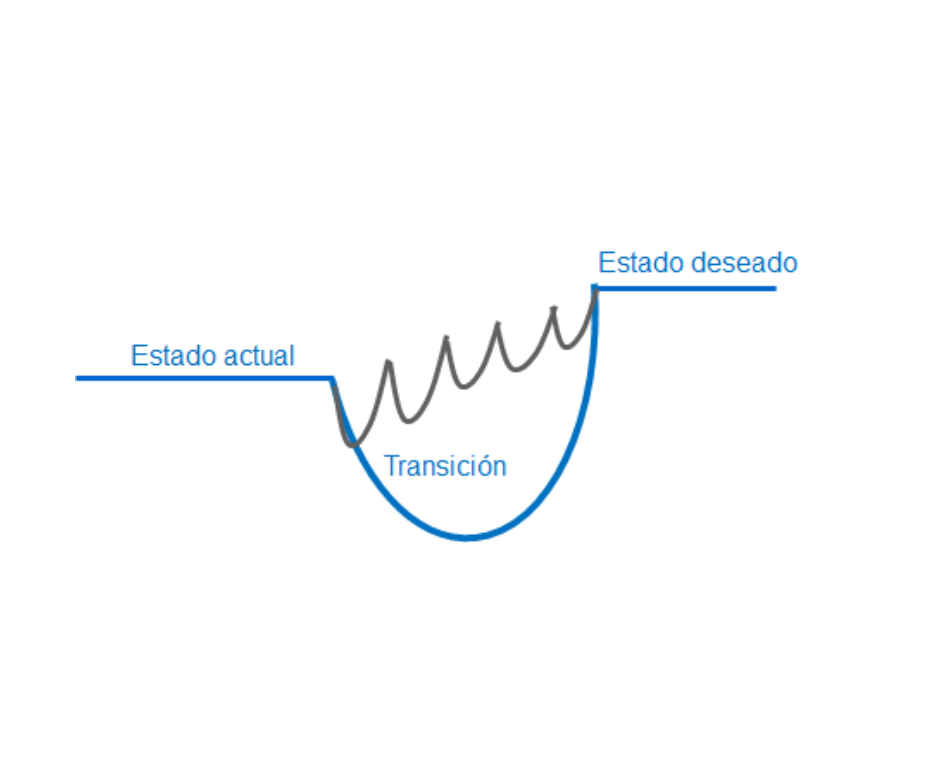The concept “process Improvement” consists of two words, “process” and “improvement”. Therefore, its correct interpretation involves two aspects: (1) how we perform the work and (2) whether we improve in the direction defined by the organization.
Both aspects are equally important, nowadays increasingly more important.
Yesterday: ‘Big-bang’ approach
“Yesterday”, in the sense of “in the recent past”, we could distinguish three major types of companies.
- Process-oriented (traditional): those who were more interested in establishing stable, homogeneous, people-independent, controllable processes; they were adopting plan-driven methods.
- Adaptability-oriented (agile): those, who were relying mainly on highly motivated and qualified, self-organizing teams; they were adopting agile methods.
- Mixed ones: Those, not so many in total, that combine both types of methods.
No matter what type an organization was, the approach to process improvement was more or less the same, a ‘big-bang’ one:
The change that was occurring in an organization could be described like this:

An important effort is made to achieve the desired state and afterwards, it is expected to enjoy the fruits of the accomplishment for quite some time.
Today: Defining the approach for tomorrow
Nowadays we are moving to, rather living in a dynamic business and market context, in which customers are gained and retained only by the capacity to develop differentiated products and services that satisfy their particular needs quickly, faster and better than the competitors could do it. Therefore, most (perhaps all) of the companies are interested in
And, if possible, achieve all these objectives quickly and with lasting results.
Both, traditional and agile organizations meet difficulties in adapting their way of work to this context. The former struggle with defining lighter processes and modifying the strong departmental structures, responsibilities and dependencies. The latter, even if they have efficient islands within the organization, suffer the difficulties of spreading their experience to other teams.
I could not find a good summary of the difficulties plan-driven organization meet on their adaptation path. I can only share with you the problems that the organizations I have been working with meet. Here I have resumed them.
With respect to barriers and the organizational issues agile organizations face, you can turn on p. 7-8 of the 7th Annual State of Agile Development Survey by Version One.
Obviously, we need a different approach to process improvement that allows the organizations to continuously drive their initiatives towards their business goals. Thus, in my opinion, if a company really wants to achieve significant improvements in its business environment, they should first agree to pursue evolutionary improvements and then, really do it. (Kanban 1st fundamental principle).
“A journey of thousands miles begins with one step”. (Japanese proverb)
Tomorrow: Evolutionary, Lean Kanban approach
The organizations are complex systems and factors such as how the organization thinks, prioritises and makes decisions, the types and complexity of the developed products, the technologies used, the “most painful” problems currently faced, etc are important in defining the right approach to process improvement. The question is not which method we should apply, but what objective do we want to achieve and what we need to do to get it.

Lean and Kanban provide powerful means that boost organizations, step by step toward their vision.
The most fundamental change for organizations used to large scope, long-term projects, and drastic organizational modifications is that Lean and Kanban limit the scope of a process improvement initiative to a level that is easy to define, understand and see, reduce the time line, and do not prescribe roles and responsibilities changes until the organization itself identifies them as necessary. At the same time they pay strong attention to rapidly incorporating the gained experience in the processes.

Briefly speaking:
- We pursue a concrete business objective (Lean, Kanban)
- We start where we are without drastically disrupting processes, roles and organizational structures (Lean, Kanban)
- We go in smaller steps, i.e. instead of conducting 40-50 (to put some numbers as an example) action points in several processes in parallel, we focus the attention on few activities that resolve a concrete problem acting over the root causes for it, and validating and demonstrating the effect in a relatively short time.
Later on, we define the next improvement step taking into account the actual organizational context (that has changed after the previous improvement step) and the actual business objectives.(Lean, Six Sigma) - We apply simpler means to spot impediments in the processes, e.g. a kanban system, in order to be able to resolve them as soon as possible. (Lean, Kanban)
- We keep focus on the workflow (Lean, Kanban)
As for the practices we use, they could come from Lean, as well as from any collection of best practices, agile methods, ITIL, CMMI, etc.



